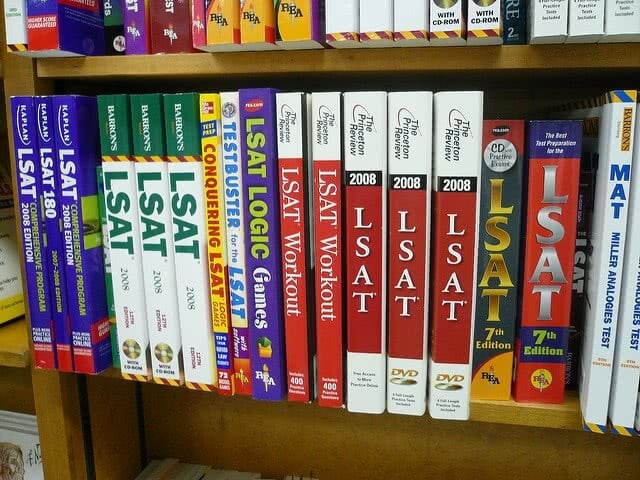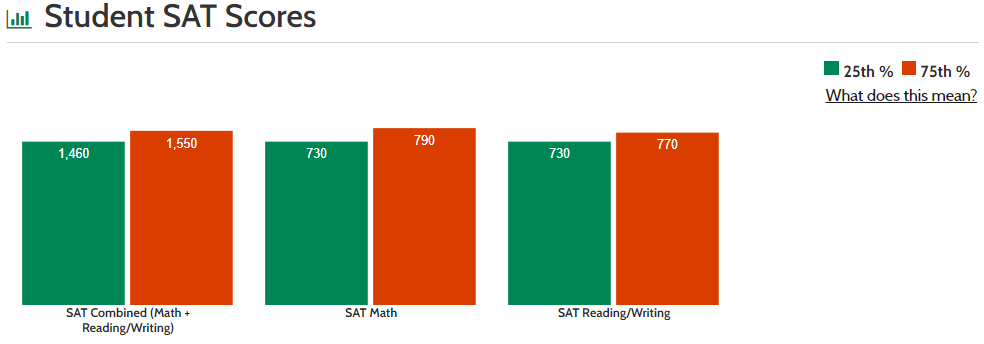A “good” PSAT score is usually in the 75th percentile, or 1075 to 1130 in recent years. Often seen as the “practice SAT,” the PSAT lays the groundwork for your SAT prep, helping you better understand where you are and where you want to be. However, score in the 99th percentile and you could actually qualify for the National Merit Scholarship, putting you in the running for a $2,500 scholarship. Here’s a look at how the PSAT is scored, average test scores, and study tips.
How is the PSAT Scored?

Source: Pixabay user Ramdlon.
The PSAT is scored between 320 and 1520. Students who take the exam have two sections to complete: Reading and Writing and Math. Each section is worth between 160 and 760. These two scores are then combined to determine your actual PSAT score.
The SAT has a slightly different scoring range – 400 to 1600. Although the SAT is harder, the score differences are designed this way to give you insight into how you’d do on the SAT. If you scored a 900 on the PSAT, you likely would have scored a 900 on the SAT. This isn’t a hard and fast rule, but rather a general guideline.
The PSAT also comes with a score report, providing students with details about how they did on the various skills they were tested on.
What is a Good PSAT Score?
The 75th percentile is usually the benchmark for a “good” PSAT score. This means that a student in the 75th percentile scored higher than 75% of other students who took the PSAT.
A recent report from College Board states that the 75th percentile for the PSAT was around 1075 for 11th graders in the United States. However, this score does change from year-to-year. For example, using data from the last three years, the 75th percentile is 1130.
College Board also uses “benchmarks” to help them better understand their PSAT scores and potential for the SAT. They’re color coded. Green means they meet or exceed expectations, Yellow means they’re close to expectations, and Red means they’re far behind expectations.
For 11th grade students, 460 is the benchmark for Reading and Writing and 510 is the benchmark for Math. This is a total score of 970, which would put a student at the 53rd percentile according to College Board’s recent report.
Here is a breakdown of how College Board currently uses their benchmarks
| Red | Yellow | Green | |
| Reading and Writing | 160 – 420 | 430 – 450 | 460 – 760 |
| Math | 160 – 470 | 480 – 500 | 510 – 760 |
| Total | 320 – 890 | 910 – 950 | 970 – 1520 |
However, keep in mind that a “good” PSAT score is relative. What matters is your goals. One way to determine “good” is to look at the average accepted SAT/ACT scores for the colleges and universities you’re interested in. This will give you a PSAT and SAT score to shoot for.
What Score is Needed for the National Merit Scholarship?
The PSAT is also known as the National Merit Scholarship Qualifying Test (NMSQT). To qualify for the National Merit Scholarship from the National Merit Scholarship Corporation (NMSC), you have to be a junior in high school and generally have to score in the top 1% or 99th percentile in your state. College Board’s report states that this is a 1370 or higher, but this is on a national scale. The higher your score, the more likely you’ll qualify for the program.
Only 50,000 of the students in the 99th percentile will be entered into the running for the scholarship. A majority will be named Commended Students and Semifinalists, while 7,000 will be named Finalists or “National Merit Scholars” and receive a $2,500 scholarship.
Tips for Studying for the PSAT
You shouldn’t just wing your PSAT. Preparation can help you get a head start on studying for the SAT and put you into the running for the National Merit Scholarship. Keep these three tips in mind:
Take Practice Tests
Taking SAT and PSAT practice tests can help you prepare for both tests at the same time! You’ll be able to find similar questions, format, and directions in these tests. We recommend sitting as if you were testing for the “real deal.” This means reducing distractions and setting time limits for each section. Adhering to test day conditions can actually help you gain more insight into your capabilities and design test taking strategies that work for you, potentially improving your score.
Review Your Results
Taking a practice PSAT over and over won’t do you much good. Instead, take time to review your results and see where you made mistakes – and the why behind the errors. This will give you direction for studying. If you misunderstood how a math problem was done, for example, you can spend time reviewing formulas and principles. Once you feel confident, you can take another practice test.
Use Other Resources
There’s more than just practice tests for PSAT and SAT prep. Resources like the Khan Academy for Official Digital SAT Prep can help you create a plan for your studying. Phone apps and flashcards can also keep you studying for your exam, even when you’re on the go.
Your PSAT score can help you understand how you’d do on the SAT if you took it today, and give you direction for increasing your SAT score in the future. A good PSAT score is relative and really depends on your goals, but if you want to do better than 75% of other students, you’ll want to aim for a 1075 or higher. Plus, if you get into that 99th percentile, you might just win a scholarship!
Did you know that College Raptor shows you the average SAT and ACT scores for accepted students at each college? College Match can help you determine the scores you need to improve your applications – use it here for free!





